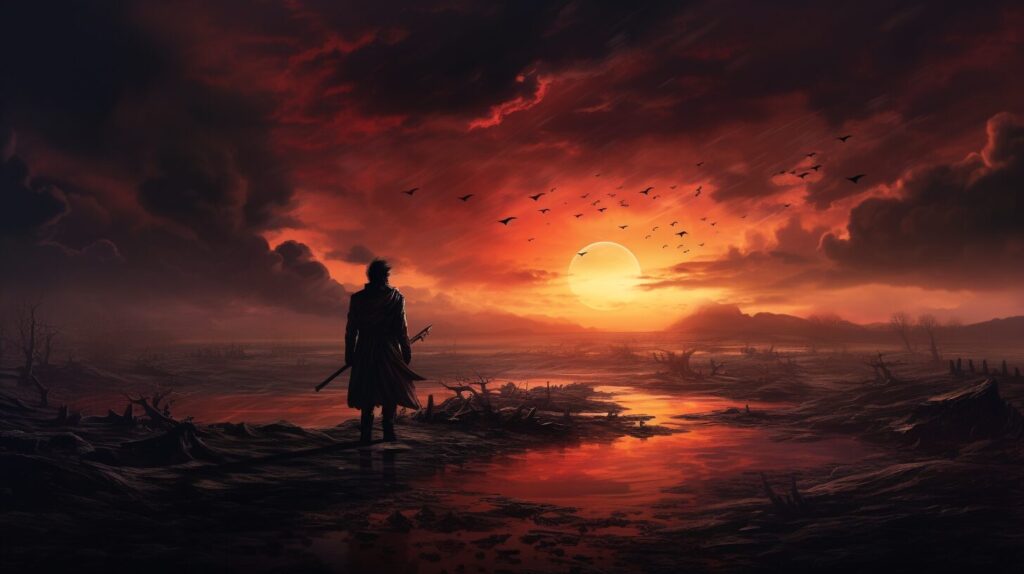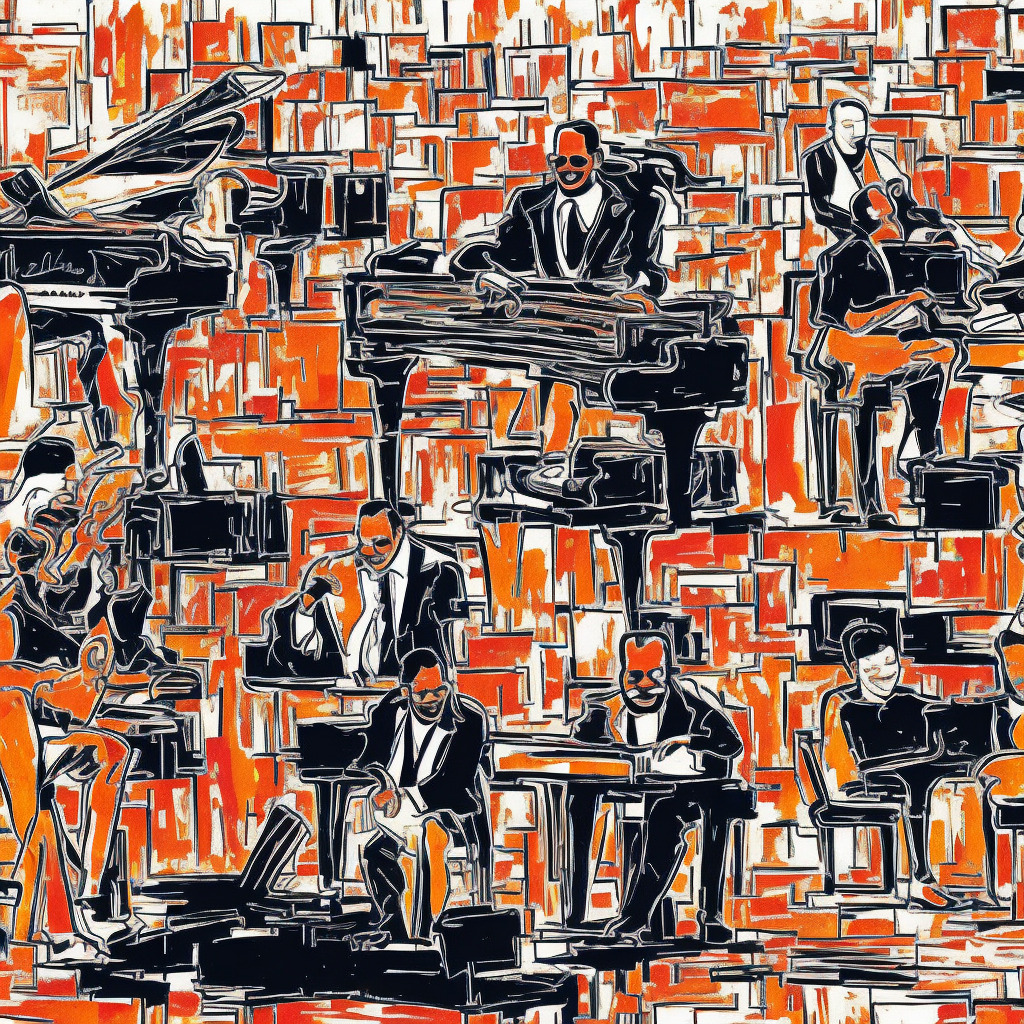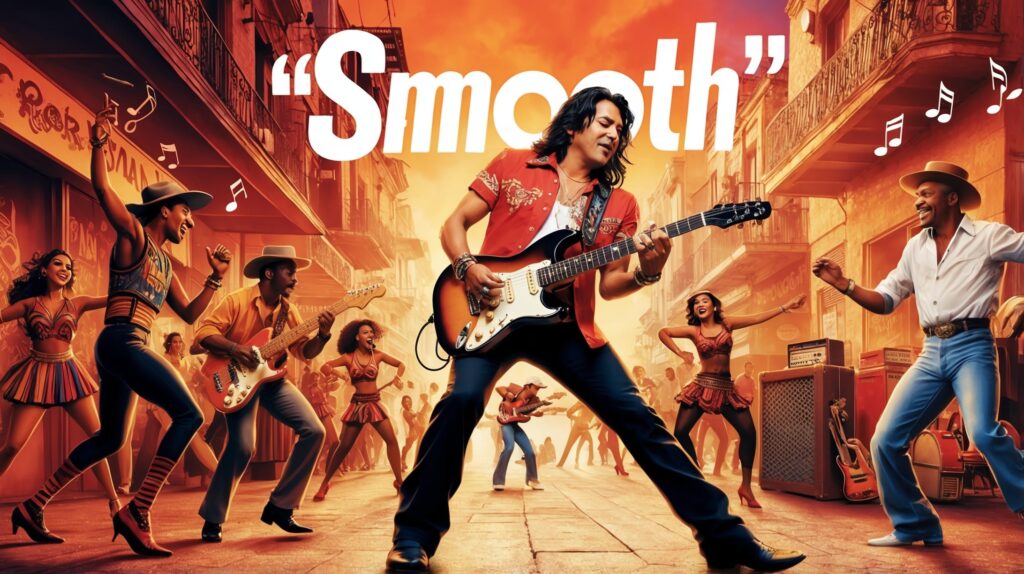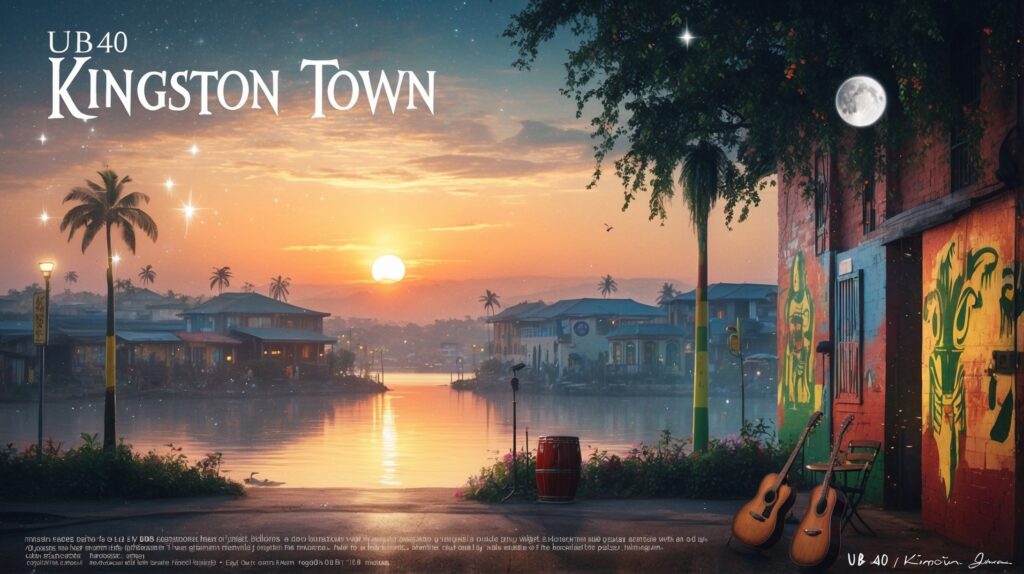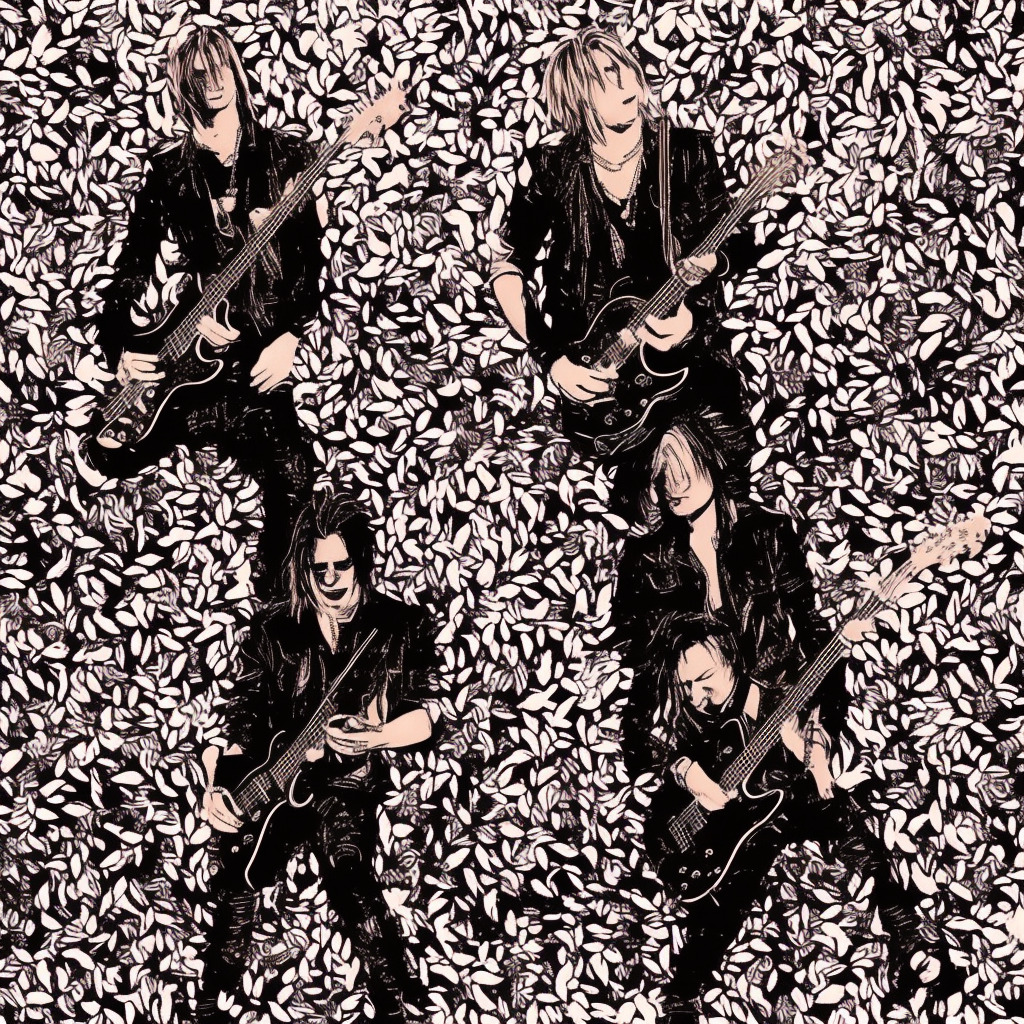Welcome to the Timeless Echo of ‘Child In Time’ by Deep Purple
In the grand tapestry of rock music, few songs capture the spirit of an era while remaining timeless. Deep Purple’s ‘Child In Time’ is such a marvel—a haunting symphony that traverses the realms of rock with a profound message wrapped in its soul-stirring melodies. As we embark on this exploration, we delve into the depths of a song that is not just heard but felt, a journey through time that resonates as strongly today as it did in 1970.
A Harmonic Prelude to Reflection
The song begins with an enigmatic blend of organ chords and guitar riffs, setting the stage for a musical voyage that is both reflective and revolutionary. It’s the kind of start that pulls you into an introspective trance, making you a willing passenger on Deep Purple’s odyssey through sound and sentiment.
The Cry of an Era, The Voice of Change
As Ian Gillan’s voice pierces the air, it carries with it the weight of an era marked by upheaval and the yearning for change. The song, rooted in the tension of the Cold War and the shadows of the Vietnam War, speaks to the universal anguish of conflict and the innocent lives ensnared by the machinations of power. It’s a powerful reminder of the song’s origins in a time of global unrest, where the specter of all-destructive wars loomed large.
A Lyrical Odyssey Through Human Experience
‘Child In Time’ is a lyrical tapestry that weaves themes of despair, hope, and the quest for understanding in a world teetering on the brink. The song’s poignant lyrics resonate with a call to consciousness, urging us to contemplate the fragility of life and the impact of our choices. It’s a meditation on the human condition, encapsulated in a musical masterpiece that transcends the confines of its time.
Emotive Journey of Musical Mastery and Timeless Appeal
“Child in Time” by Deep Purple: A timeless rock masterpiece invoking despair and hope, and a testament to the band’s creative prowess and everlasting musical legacy.
 “Child in Time” by the legendary rock band Deep Purple is a musical masterpiece, revealing the band’s remarkable talent and creativity. The song begins with a melancholic piano introduction, setting the stage for an emotional journey. This poignant beginning morphs into a captivating blend of hard rock with progressive and bluesy elements, distinguishing it from other songs of the era.
“Child in Time” by the legendary rock band Deep Purple is a musical masterpiece, revealing the band’s remarkable talent and creativity. The song begins with a melancholic piano introduction, setting the stage for an emotional journey. This poignant beginning morphs into a captivating blend of hard rock with progressive and bluesy elements, distinguishing it from other songs of the era.
The lyrics of “Child in Time” are filled with despair, contemplation, and an urgent call for change. The band’s lead vocalist, Ian Gillan, brings these words to life with his powerful and emotive voice, intensifying the song’s impact. The song skillfully explores the duality of human nature, between good and evil, light and darkness, and the consequences of our actions, adding a layer of depth and encouraging listeners to delve deeper into its meaning.
In live performances, “Child in Time” quickly became a fan favorite, a testament to its powerful appeal. It was a staple in Deep Purple’s concerts, where the band’s exceptional musicianship truly shone. The song’s enduring popularity among fans underscores its timeless quality, contributing to the band’s long-lasting success.
The song played a crucial role in establishing the band’s unique musical style. This iconic track defined the band’s sound and set them apart in the music industry. While it’s hard to measure its direct influence on Deep Purple’s career trajectory, its popularity and enduring appeal suggest a significant impact.
“Child in Time” exemplifies why Deep Purple is considered a pioneer of rock music. The song’s impact on the band’s career is undeniable, contributing to their selling of over 100 million records worldwide. Even their last performance of the song during the 2002 European tour echoes its enduring legacy. Today, decades after its release, “Child in Time” continues to resonate with fans, serving as a powerful reminder of Deep Purple’s immense contribution to music history.
Unsung Hero: The Unconventional Triumph of ‘Child In Time’
“Child In Time”: Deep Purple’s unsung hard rock classic – overlooked by awards, immortalized in cinema, revered in rock history.
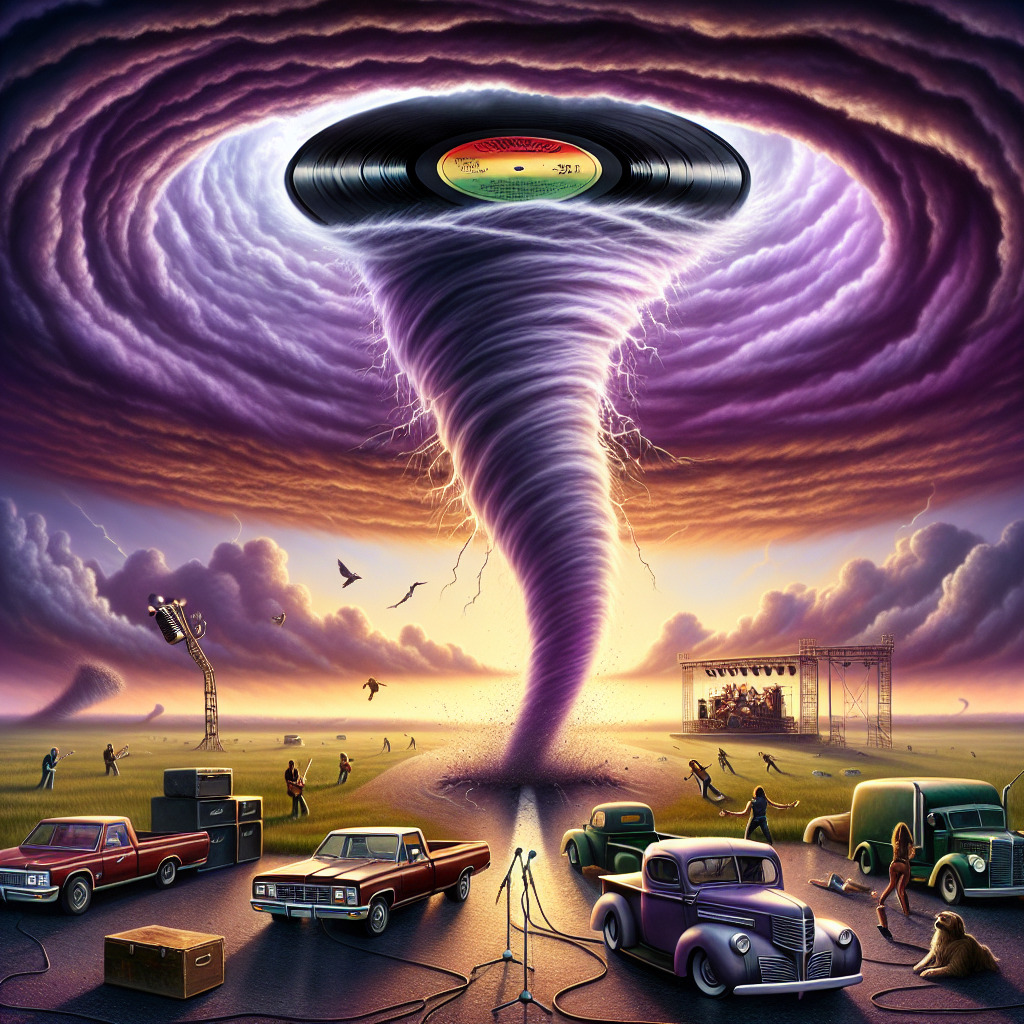 “Child In Time,” a legendary track by Deep Purple, is a masterful blend of hard rock and progressive elements that have captivated audiences for decades. However, it’s a curious case when it comes to formal recognition and accolades. You’d think that such a groundbreaking song would be adorned with awards or at least a few nominations, right? But surprisingly, “Child In Time” has been largely overlooked by the awards circuit.
“Child In Time,” a legendary track by Deep Purple, is a masterful blend of hard rock and progressive elements that have captivated audiences for decades. However, it’s a curious case when it comes to formal recognition and accolades. You’d think that such a groundbreaking song would be adorned with awards or at least a few nominations, right? But surprisingly, “Child In Time” has been largely overlooked by the awards circuit.
However, despite being an unsung hero in the world of rock, the song gained a new lease on life when it made an appearance in the 1996 blockbuster movie, “Twister.” As storm chasers navigated through tornadoes, it was the pulsating rhythms of “Child In Time” that provided an ideal backdrop, adding a layer of intensity to the thrilling sequences. This high-octane placement may not be an award, but it earned the song a spot in cinematic history.
And while many artists have been inspired by Deep Purple, “Child In Time” remains a sacred entity. There are no officially released cover versions by any known artists or bands. It seems that it’s a song so unique and powerful that musicians hesitate to tamper with its original form. While this might seem unfortunate to some, it also solidifies the song’s status as an untouchable classic. So, while it may not boast a shiny collection of awards or a plethora of covers, “Child In Time” has a distinctive place in rock history and continues to resonate with audiences today.
A Legacy Beyond Visuals: The Power and Appeal of Deep Purple’s Live Performances
Without an official music video, Deep Purple’s “Child in Time” relies on the band’s raw performances, their musical prowess, and an engaging stage presence to connect with audiences. Praised for its authenticity, the song’s popularity is a testament to Deep Purple’s dedication to their craft and the enduring appeal of their music.
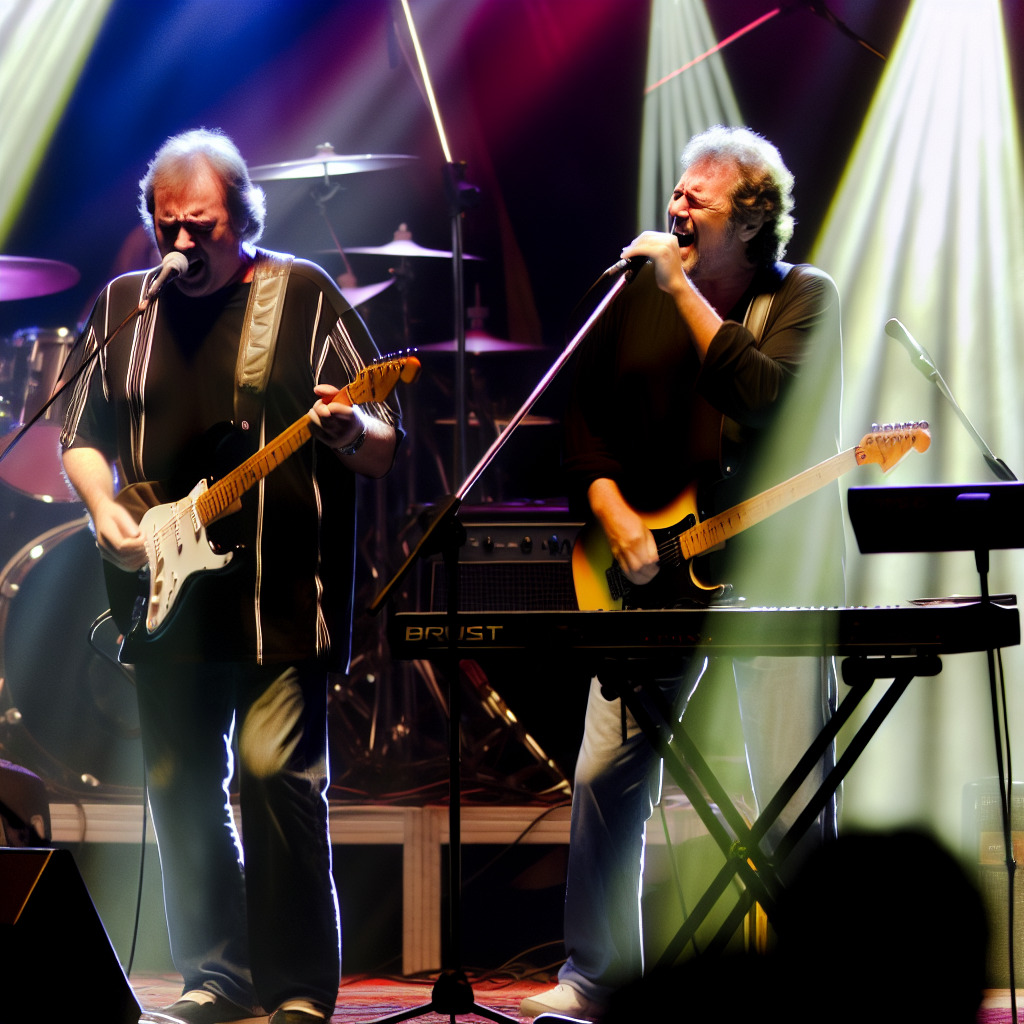 Deep Purple’s “Child in Time”, despite its iconic reputation in the rock music scene, lacks an official music video. However, the band’s performance clips often serve as unofficial visuals for the song. The raw energy and intense passion of the band members during their performances have always been a central element of the song’s appeal. The band’s stage presence, combined with the song’s powerful lyrics and relentless rhythm, creates a captivating spectacle that remains a significant aspect of its popularity.
Deep Purple’s “Child in Time”, despite its iconic reputation in the rock music scene, lacks an official music video. However, the band’s performance clips often serve as unofficial visuals for the song. The raw energy and intense passion of the band members during their performances have always been a central element of the song’s appeal. The band’s stage presence, combined with the song’s powerful lyrics and relentless rhythm, creates a captivating spectacle that remains a significant aspect of its popularity.
The track’s enduring success does not rely on intricate video narratives or flashy visuals. Instead, it thrives on the band’s ability to connect with audiences through pure musical talent and raw emotional expression. The performances feature the band members in their element, showcasing their individual skills and collective chemistry. Ian Gillan’s soulful vocals, Ritchie Blackmore’s electrifying guitar solos, Jon Lord’s mesmerizing keyboards, and the tight rhythm section of Roger Glover and Ian Paice create an audiovisual experience that leaves audiences spellbound.
Critics and fans alike have praised Deep Purple’s performance-based approach, lauding the band for their authenticity and undeniable musical prowess. The lack of a traditional music video has not hindered the song’s popularity in any way. If anything, it’s reinforced the band’s reputation as a group that is all about the music.
The production of these performance clips involved the band members and their dedicated crew. Each performance was a team effort, with a shared commitment to deliver a memorable show. These clips may not feature any celebrity cameos or high-profile directors, but they represent the band’s dedication to their craft.
In conclusion, while the absence of a conventional music video for “Child in Time” is an anomaly in today’s music landscape, Deep Purple’s approach emphasizes the power of their music and the charisma of their live performances. It’s a testament to the timeless appeal of the song and the band’s enduring legacy.
An Immortal Melody: The Unending Resonance of Deep Purple’s Masterpiece
“Child In Time” by Deep Purple – a timeless rock masterpiece from their pivotal album “In Rock”. Despite lacking formal recognition, its profound musicality and the band’s authentic performance style have made it an enduring emblem of rock music, continuing to resonate with fans worldwide.
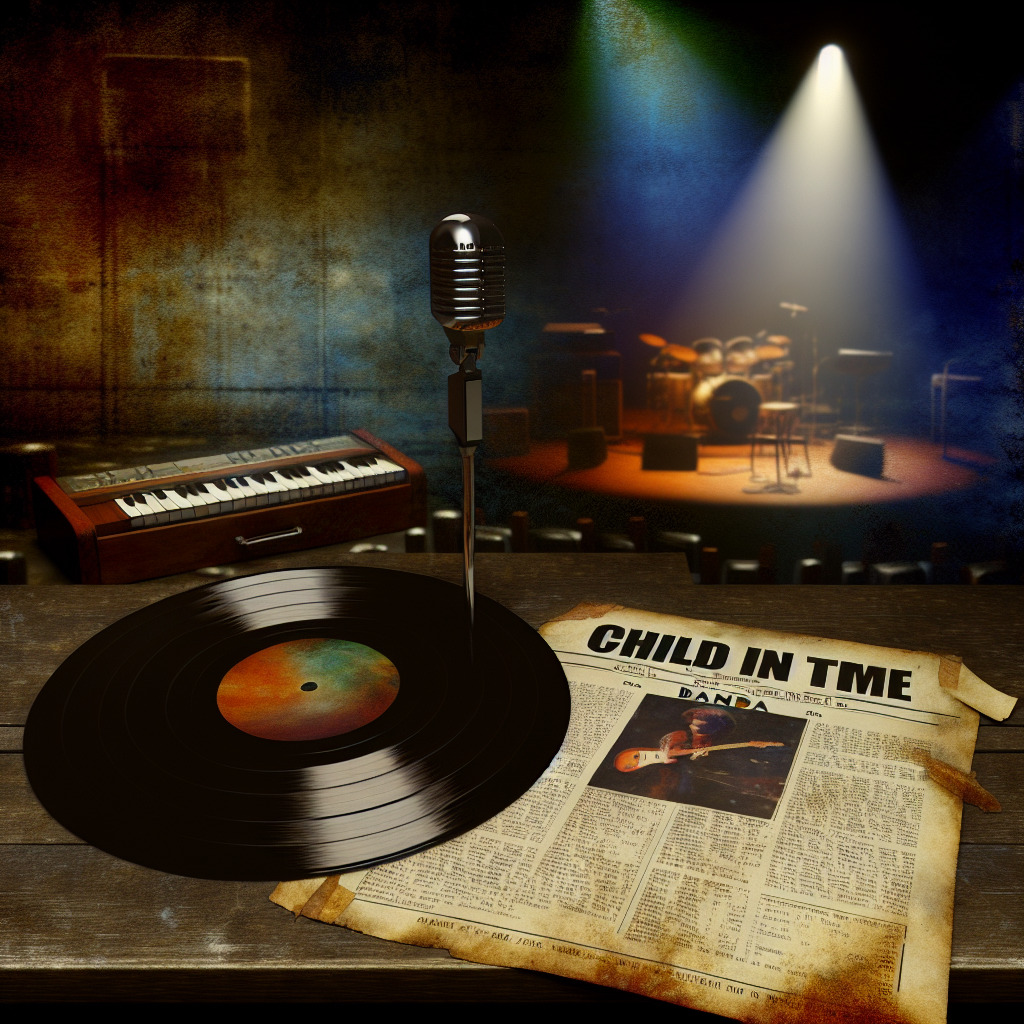 “Child In Time” by Deep Purple is a haunting and powerful track that has transcended time and continues to be treasured by rock music enthusiasts around the world. It’s part of the band’s fourth studio album “In Rock”, released in 1970, which marked a pivotal moment in the band’s career. The album, a commercial success especially in Europe, peaked at No. 4 in the UK charts, holding its position for well over a year.
“Child In Time” by Deep Purple is a haunting and powerful track that has transcended time and continues to be treasured by rock music enthusiasts around the world. It’s part of the band’s fourth studio album “In Rock”, released in 1970, which marked a pivotal moment in the band’s career. The album, a commercial success especially in Europe, peaked at No. 4 in the UK charts, holding its position for well over a year.
Although specific chart details of “Child In Time” remain elusive, the overall success of the album suggests the song played a substantial role in its performance. The track is highly regarded among fans, pointing towards its significant contribution to the album’s chart success. However, despite its popularity, the song has been overlooked by formal awards circuits.
The song’s impact goes beyond commercial success and chart positions. “Child In Time” is a staple in the realm of rock music, its legacy undiminished even after decades since its release. It has been revered for its profound musical and lyrical depth, earning a dedicated fan base. It’s a testament to the timeless appeal of the track that despite its lack of hard data and formal recognition, the song’s cultural impact and influence in rock music remain indisputable.
The band’s choice to focus on their performance rather than creating traditional music videos for the song has enhanced their reputation for authenticity. This approach underscores the band’s commitment to their music, proving that the power of their performance alone can create a lasting impact. The absence of a conventional music video has not hindered the song’s popularity. In fact, it exemplifies how Deep Purple’s captivating live performances and the timeless quality of “Child In Time” continue to resonate with audiences, contributing to the band’s enduring legacy.
You’ll see the line
The line that’s drawn between
Good and bad
See the blind man
Shooting at the world
Bullets flying
Oh, taking toll
If you’ve been bad
Oh, Lord, I bet you have
And you’ve not been hit
Oh, by flying lead
You’d better close your eyes
Oh
Bow your head
Wait for the ricochet
Sweet child in time
You’ll see the line
The line that’s drawn between
Good and bad
See the blind man
Shooting at the world
Bullets flying
Oh, taking toll
If you’ve been bad
Lord, I bet you have
And you’ve not been hit
Oh, by flying lead
You’d better close your eyes
Oh
Bow your head
Wait for the ricochet
An Insight into the Poetic Protest of ‘Child in Time’: A Deep Dive into its Lyrical Genius and Cultural Resonance
Echoing the tumultuous times of the Cold War, Deep Purple’s “Child in Time” lyrically combines powerful social commentary, stark metaphors and resonant storytelling. Its somber tone, emotional impact, and cultural references encapsulate the fear and uncertainty of the era, making it a timeless standout in the band’s discography. Drawing from the world of protest poetry, the song’s profound exploration of violence and lost innocence continues to resonate with audiences, cementing its status as a classic in the annals of rock history.
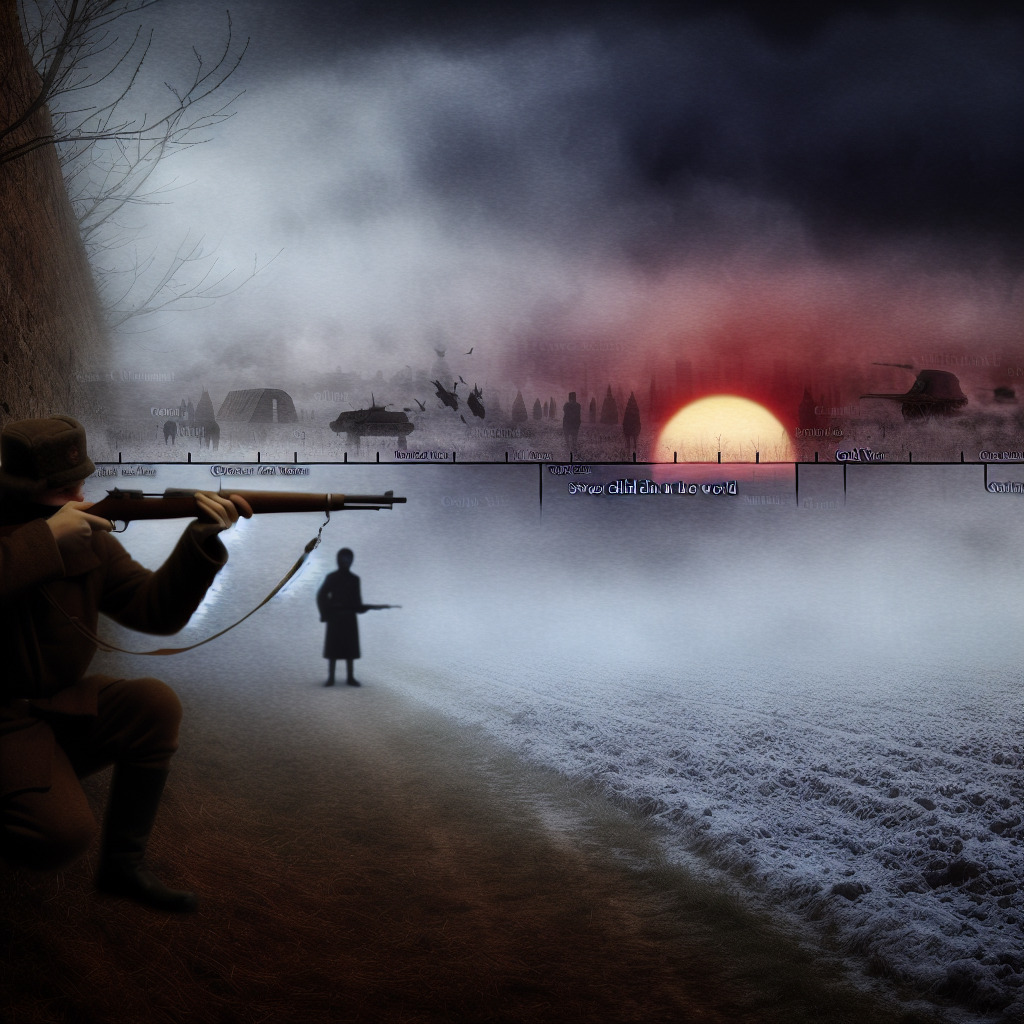 The lyrics of “Child in Time” strongly reflect the tension and uncertainty of the era it was written in, the height of the Cold War. Phrases like “See the blind man/Shooting at the world/Bullets flying/Oh, taking toll” can be interpreted as a commentary on the senseless violence and impending doom that characterized the period. The repeated line “Sweet child in time/You’ll see the line/The line that’s drawn between/Good and bad” suggests a coming of age narrative, where the protagonist is forced to confront the harsh realities of the world.
The lyrics of “Child in Time” strongly reflect the tension and uncertainty of the era it was written in, the height of the Cold War. Phrases like “See the blind man/Shooting at the world/Bullets flying/Oh, taking toll” can be interpreted as a commentary on the senseless violence and impending doom that characterized the period. The repeated line “Sweet child in time/You’ll see the line/The line that’s drawn between/Good and bad” suggests a coming of age narrative, where the protagonist is forced to confront the harsh realities of the world.
Throughout the song, there is a clear narrative being told from a third-person perspective, which adds a layer of detachment and allows for a broader commentary on society and human nature. The narrative style and lyrical themes resonate strongly with the audience, acting as a mirror to the global events and individual experiences of the time.
The lyrics make use of various literary devices that enhance their emotional impact and storytelling. The metaphor of a “blind man shooting at the world” serves as a stark commentary on the senseless violence and lack of direction during the Cold War. The lyrics also employ a consistent rhyme scheme, contributing to the song’s musicality and rhythmic flow.
Comparatively, the song’s lyrical content stands out in Deep Purple’s discography, representing a more serious and thought-provoking aspect of their work. While the band is known for their hard rock sound and often upbeat lyrics, “Child in Time” offers a contrast with its somber tone and profound social commentary.
The song also contains cultural and social references that add depth to its lyrics. Given its release during the peak of the Cold War, it can be perceived as a commentary on the political tensions of the era. This context contributes to the song’s depth and relatability, as it captures the apprehension and fear that many felt during that time.
The emotional impact and relatability of the lyrics are undeniable. The song’s somber tone and poignant commentary evoke feelings of despair, fear, and frustration, which many listeners could relate to, especially during the tense period of the Cold War.
Moreover, the language and wordplay in the lyrics are straightforward yet impactful. The repeated use of the phrase “Sweet child in time” invokes a sense of innocence lost, while the metaphor of the “blind man shooting” conveys a sense of aimlessness and destruction.
As for controversies or misinterpretations, the song’s overt references to the Cold War and its grim outlook might have been controversial during its release. But these elements also contribute to the song’s lasting impact, providing a raw and unflinching commentary on a significant period in history.
The lyrics of “Child in Time” show a strong influence from the literary world, particularly the tradition of protest poetry. The song’s social commentary, narrative style, and use of metaphor are all elements commonly found in protest poetry, adding an extra layer of depth to the lyrics.
In terms of fan theories and interpretations, many believe that the song’s lyrics are a critique of the Vietnam War, reflecting the widespread anti-war sentiment of the time. These interpretations add another layer of depth to the song, highlighting its relevance and impact on contemporary audiences.
Lastly, while there’s no official statement from the band regarding the song’s lyrics, the context and themes strongly suggest a critique of the political tensions and violence of the era. This interpretation aligns with the song’s somber tone and powerful delivery, and it’s likely that the band intended for the song to be a reflection of the times.
In conclusion, the lyrics of “Child in Time” are a profound exploration of the human condition during a time of global tension. They offer a stark commentary on the senselessness of violence and the loss of innocence, resonating with audiences then and now. The song’s narrative style, use of literary devices, and cultural references enhance its depth and relatability, making it a timeless classic in Deep Purple’s discography.
A Musical Fusion of Rock and Classical Elements in G Minor
“Deep Purple’s “Child In Time” – A symphony of rock and classical influences that takes listeners on an emotional rollercoaster with its dynamic tempo and haunting vocals.”
 “Child In Time” by Deep Purple, a song that overflows with immense musicality and complexity, is truly a masterpiece in the realm of rock music. Written in the key of G minor, the song’s compelling musical structure manifests itself as a fusion of rock and classical influences.
“Child In Time” by Deep Purple, a song that overflows with immense musicality and complexity, is truly a masterpiece in the realm of rock music. Written in the key of G minor, the song’s compelling musical structure manifests itself as a fusion of rock and classical influences.
The song opens with a soothing organ intro played by the legendary Jon Lord, establishing the tonal center of G minor. This is followed by Ritchie Blackmore’s iconic guitar line, a melody that is simple yet eerie, taking full advantage of the plaintive quality of the minor key. The song adheres to a fairly standard verse-chorus-verse structure, with the verses carried by Ian Gillan’s haunting vocals and the choruses marked by Blackmore’s intense, virtuosic guitar solos.
The chord progression throughout the verses is fairly straightforward, involving a repeated sequence of Gm – D – Gm – D – Eb – D7. This creates a cyclical effect that mirrors the overall theme of the song. However, during the chorus, the chords shift dramatically to a sequence of Gm – Cm – Gm – Cm – D7. This change, along with the increased tempo, adds a sense of urgency and intensity to the song, reflecting the escalating tension in the lyrics.
One of the most distinctive features of “Child In Time” is its tempo. The song starts off slowly and gradually builds up to a frenetic pace during the choruses, showcasing Deep Purple’s mastery over dynamic and rhythmic variation. This fluctuation in tempo, along with the constant interplay between major and minor tonalities, makes the song a rollercoaster ride of emotions.
Evolving Soundscapes: The Role of Deep Purple’s Core Trio in the Creation of ‘Child in Time’
“From their humble beginnings in 1967 London, Deep Purple rocketed to fame as pioneers of heavy metal and modern hard rock, with ‘Child in Time’ being one of their most iconic songs. Famed for its blend of hard rock and progressive complexity, the track was a standout in their transformation to a heavier sound. The mesmerizing trio – Ritchie Blackmore, Jon Lord, and Ian Paice, crafted an enduring masterpiece that still strikes a chord today. With over 100 million albums sold worldwide and a Guinness Book of World Records mention, Deep Purple’s legacy is undeniable. Their influence continues to reverberate through the music industry, and ‘Child in Time’ stands as a powerful testament to their talent and creativity.”
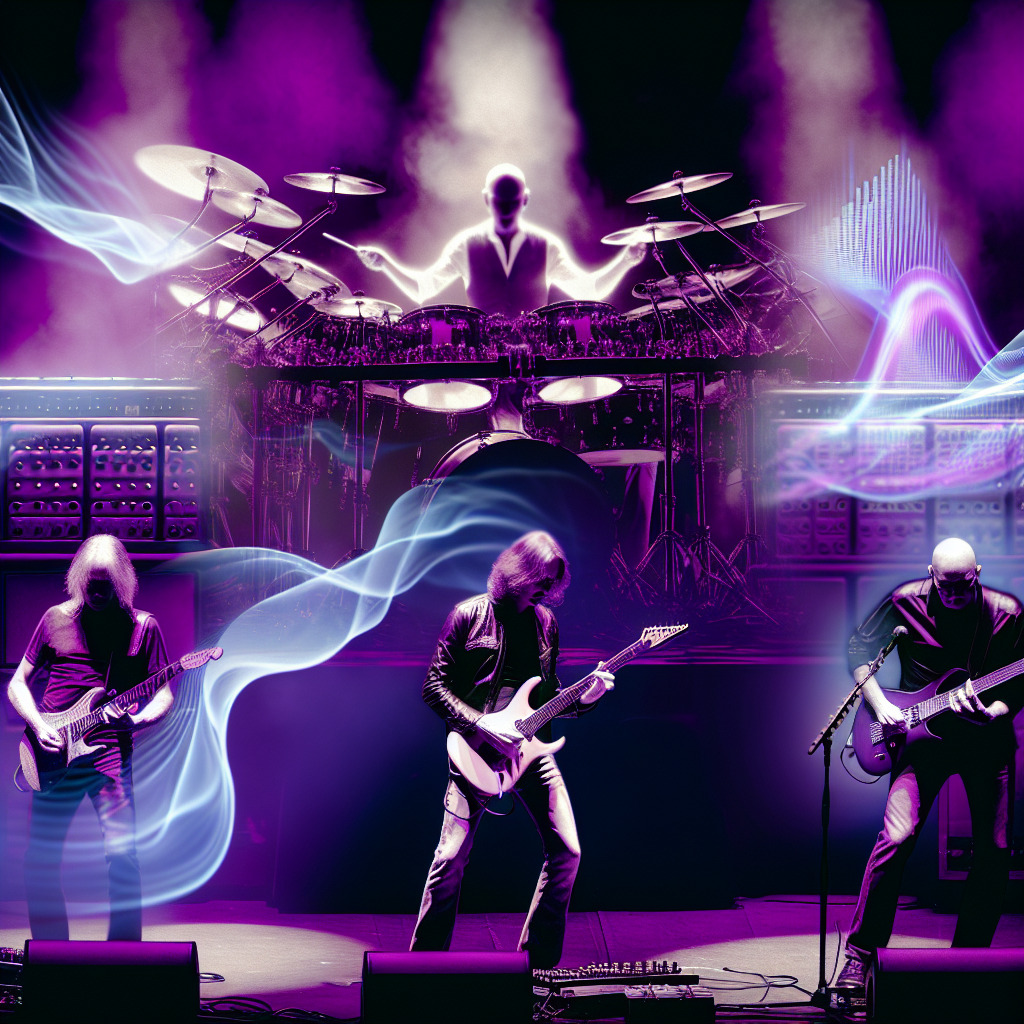 The band Deep Purple was formed in London in 1967 and is considered a pioneer of heavy metal and modern hard rock. Over the years, the band has undergone numerous lineup changes, with drummer Ian Paice being the only constant member. The band initially had a psychedelic rock and progressive rock sound, but transitioned to a heavier sound with their 1970 album “Deep Purple in Rock,” the album that features our song of interest, “Child in Time.”
The band Deep Purple was formed in London in 1967 and is considered a pioneer of heavy metal and modern hard rock. Over the years, the band has undergone numerous lineup changes, with drummer Ian Paice being the only constant member. The band initially had a psychedelic rock and progressive rock sound, but transitioned to a heavier sound with their 1970 album “Deep Purple in Rock,” the album that features our song of interest, “Child in Time.”
The band has had several notable accomplishments throughout its career. Deep Purple was listed in the 1975 Guinness Book of World Records as “the globe’s loudest band” and has sold over 100 million albums worldwide. They were ranked number 22 on VH1’s Greatest Artists of Hard Rock programme and were inducted into the Rock and Roll Hall of Fame in 2016.
“Child in Time” is a product of the Mark II lineup of Deep Purple, which included Ian Gillan and Roger Glover. This lineup was the most commercially successful, and it was during this period that the song was created.
The song was composed by Ritchie Blackmore, Jon Lord, and Ian Paice. Blackmore’s iconic guitar parts, Lord’s mesmerizing keyboard, and Paice’s steady drumming all contribute to the unique sound of the song. The song’s composition is a reflection of the band’s transition to a heavier sound, showcasing their ability to combine elements of hard rock with the complexity of progressive rock.
Blackmore, Lord, and Paice had a significant role in the creation of “Child in Time.” Their individual styles and influences can be heard throughout the song, from the ominous guitar melody to the haunting organ intro and the steady, driving rhythm. Their composition greatly contributed to the overall feel and success of the track, making it one of the band’s most popular and enduring songs.
Throughout their career, Deep Purple has collaborated with a number of artists and musicians. However, the chemistry and partnership between Blackmore, Lord, and Paice was truly special, and this was evident in their collaborative effort on “Child in Time.”
In terms of the song’s reception, while it may not have won any notable awards, it has been widely recognized and praised by critics and fans alike for its musical complexity and emotional depth. The song has also been influential in shaping the genre of hard rock and has inspired many musicians and bands in the years since its release.
Despite the band’s numerous lineup changes and evolution in musical style, the legacy of Deep Purple and the influence of their compositions, including “Child in Time,” remain significant in the music industry. The song serves as a testament to the band’s creativity, musical talent, and enduring appeal.
In conclusion, the composers of “Child in Time” – Ritchie Blackmore, Jon Lord, and Ian Paice – brought their individual styles and influences to the creation process, resulting in a song that is both complex and profoundly emotional. Their composition has played a pivotal role in the song’s success and has greatly contributed to the legacy of Deep Purple.
Experience the emotional journey that is ‘Child in Time’ by #DeepPurple. A masterpiece blend of hard rock and progressive elements, untouched by covers, and a hidden gem on award circuits. Its melancholic yet intense vibes continue to resonate with us today. #RockClassic 🎸🔥

